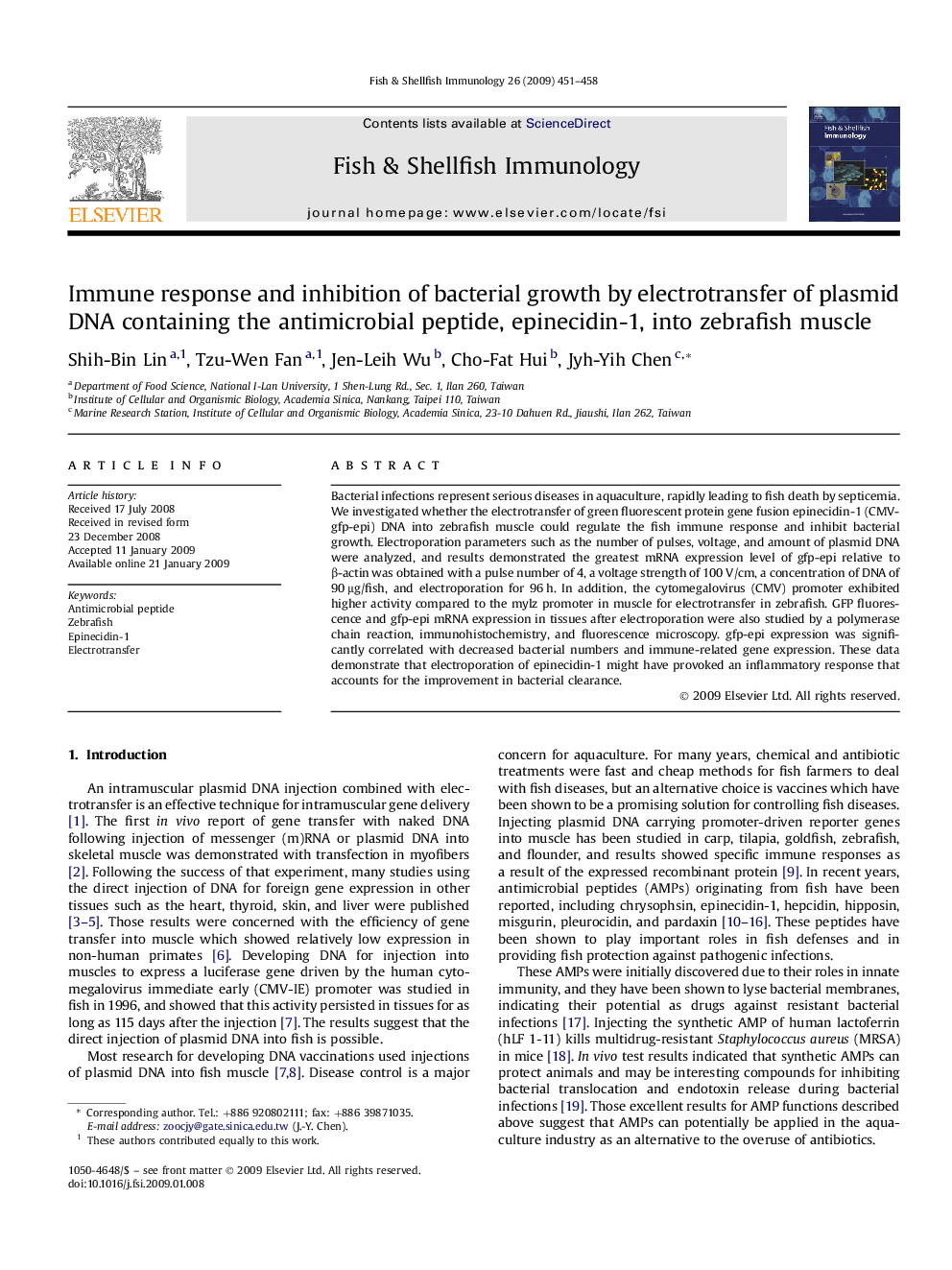| Article ID | Journal | Published Year | Pages | File Type |
|---|---|---|---|---|
| 2432972 | Fish & Shellfish Immunology | 2009 | 8 Pages |
Bacterial infections represent serious diseases in aquaculture, rapidly leading to fish death by septicemia. We investigated whether the electrotransfer of green fluorescent protein gene fusion epinecidin-1 (CMV-gfp-epi) DNA into zebrafish muscle could regulate the fish immune response and inhibit bacterial growth. Electroporation parameters such as the number of pulses, voltage, and amount of plasmid DNA were analyzed, and results demonstrated the greatest mRNA expression level of gfp-epi relative to β-actin was obtained with a pulse number of 4, a voltage strength of 100 V/cm, a concentration of DNA of 90 μg/fish, and electroporation for 96 h. In addition, the cytomegalovirus (CMV) promoter exhibited higher activity compared to the mylz promoter in muscle for electrotransfer in zebrafish. GFP fluorescence and gfp-epi mRNA expression in tissues after electroporation were also studied by a polymerase chain reaction, immunohistochemistry, and fluorescence microscopy. gfp-epi expression was significantly correlated with decreased bacterial numbers and immune-related gene expression. These data demonstrate that electroporation of epinecidin-1 might have provoked an inflammatory response that accounts for the improvement in bacterial clearance.
